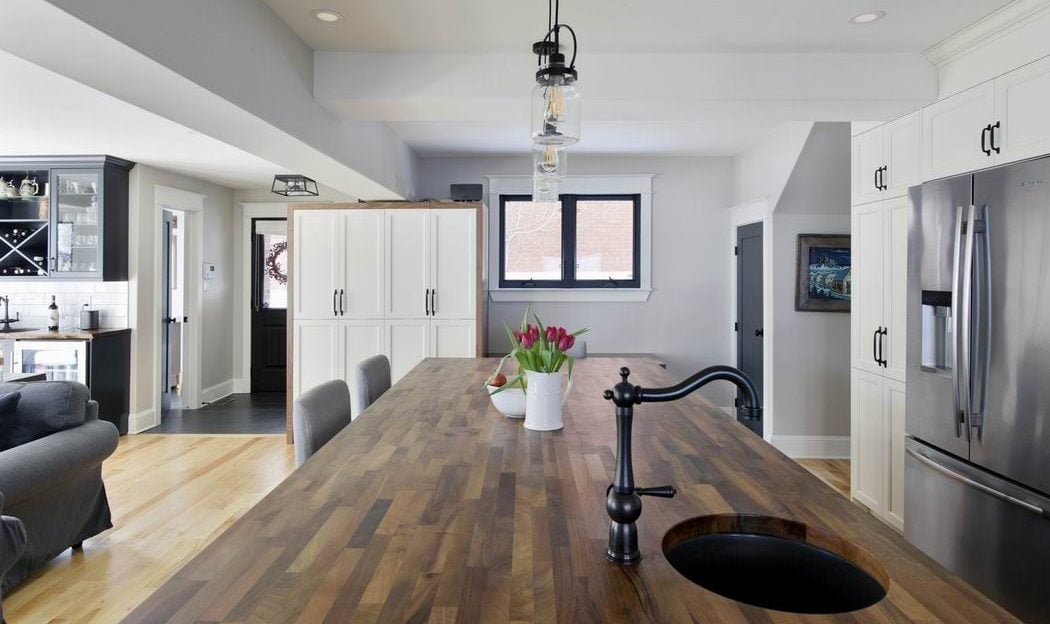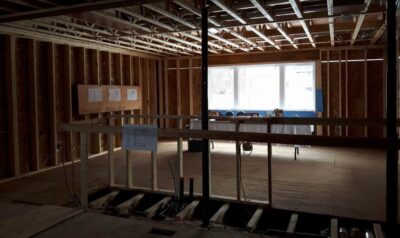Wondering which way to go when it comes to choosing a kitchen countertop? Here’s a quick guide to 11 popular styles.
Countertops take up a lot of real estate in your kitchen. That means they can make a big impact in terms of look, feel and usability. And that’s why it’s worth making the time to weigh your options and choose carefully.
Laminate
It’s easy to discount laminate when you’re looking at a high-end kitchen, but today’s laminates have come a long way from the 1950s Formica we often think of when it comes to laminate surfaces.
Pro: High-quality laminate that’s preformed with no edge seams and available in many colours and styles can give the look of a stone counter at a fraction of the cost and maintenance.
Con: Even higher-end laminate can scratch and burn in some cases — damage that can be difficult or impossible to fix.
Solid surface
Sold under various brands, including Corian and Dekton, solid surface counters are man-made with a blend of acrylic particles and resins that are pressed into sheets and other shapes.
Pro: Comes in various colours and patterns. Almost invisible joints create a seamless look for counters, backsplashes and sinks. It also resists staining.
Con: It can scratch, stain and cut easily so using a cutting board is a must. It can also be vulnerable to heat.
Granite
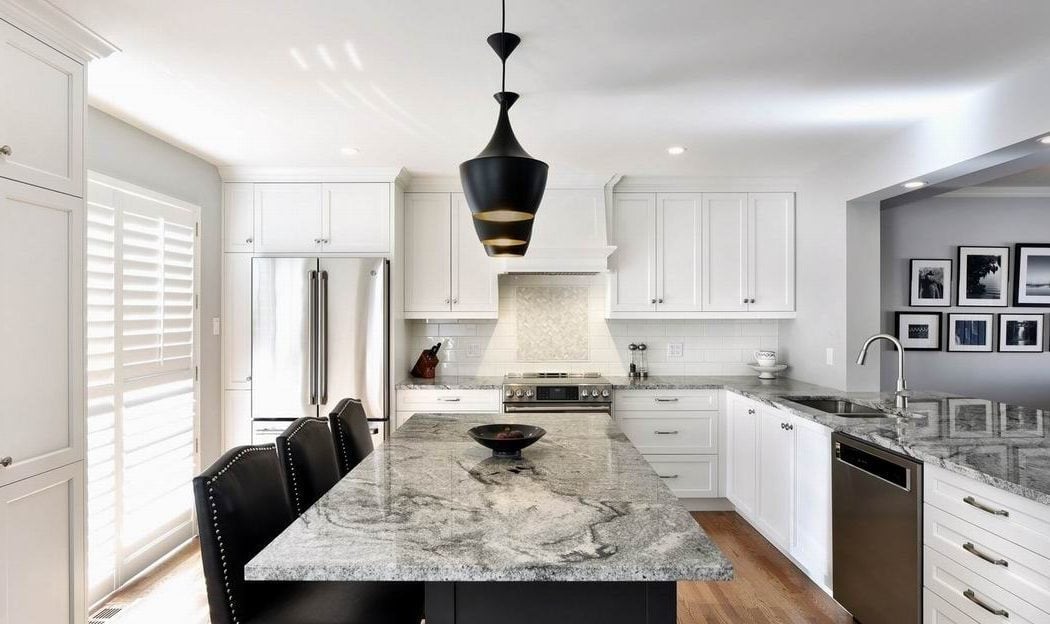

Granite is one of the standards in counter finishes, whether polished or honed. Each piece is unique and can add a dramatic element to your kitchen.
Pro: Granite is durable and resists heat and most stains. And because it’s so popular, it adds value to your home.
Con: It’s not a budget finish, although prices have come down in recent years as engineered stones have become more common. It requires periodic sealing to ensure resistance to stains and edges and corners can chip, requiring a pro to fix. (Rounded edges lessen this risk.) There can also be imperfections in the slab.
Quartz
Often thought of as a stone, quartz is actually an engineered product that is the current darling of counter choices. It contains mostly quartz, but other minerals such as glass, mirror and dyes are added and then it’s shaped into slabs and bound with resins.
Pro: It’s durable (resists cuts, scratches, stains and heat) and easy to maintain. The look of quartz is also versatile. Besides being able to mimic natural stones, as a man-made material it can come in many solid colours or have patterns. And it can be custom fabricated in any shape or size. It’s also hygienic — since it doesn’t have any natural pores, it’s food safe and can be used in hospitals, restaurants, etc.
Con: Like granite, it’s not inexpensive. And like granite, edges and corners can chip, which requires a pro to fix.
Marble
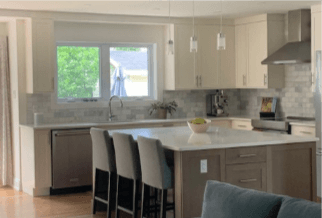
A marble backsplash can be an alternative to pricey marble counters.
Not quite as common as granite or quartz, marble offers an elegant, timeless, classic look. It’s more often used in backsplashes and for bathroom vanities.
Pro: It’s water resistant (although the high iron content in our water can stain it a rust colour), beautiful and adds value to your home.
Con: This one’s pricey, which is why it’s often seen as an accent rather than covering all kitchen surfaces. Not as durable as other stones, it can be nicked, cut and scratched fairly easily and can stain. It must be sealed and it’s also not as resistant to heat.
Butcher block & other woods

Wood counters give a wonderfully warm look that are both decorative and functional. Hardwoods such as maple or oak are most often the wood of choice.
Pro: While it can be nicked and cut, it’s easy to repair. Wood counters are also easy to clean and long-lasting when properly maintained. And certain species are sanitary, even for chopping meat, when properly sealed.
Con: The finish used is important. According to testing by Consumer Reports, varnish improves stain resistance while penetrating oils diminishes it, and counters must be sealed frequently. Wood counters are also not inexpensive.
Concrete
Concrete is making inroads in interior design, including countertops. But sidewalk slabs these are not; today’s concrete counters are often polished and luxurious.
Pro: Highly customizable, concrete counters can be coloured and textured in surprisingly various ways. Concrete is also heat- and scratch-resistant and offers an unusual design feature. Fun fact: it’s also energy efficient. When the temperature in your home rises, concrete captures the heat and releases it when the temperature cools down.
Con: They’re not cheap due to the custom work to install them (they’re often formed on site). Cracking may occur over time, although new treatments reduce this tendency, and the surface is porous unless it’s sealed regularly.
Porcelain
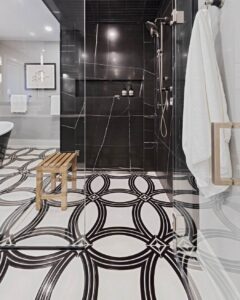
This is a new-to-North America material that we first saw locally in the 2017 dream home for the CHEO Dream of a Lifetime Lottery. It’s manufactured from a type of clay.
Pro: It’s even stronger than granite and has the versatility of quartz, resisting chipping, scratches, cracks, wear and tear. It’s available in many colours, patterns and finishes. It’s also possible to get in large slabs, meaning your oversized kitchen island can be covered in one piece (no seams!). It can also come in slabs as thin as ¼ inch, which enables multi-use options, and it can be easily installed as a full-height backsplash.
Con: While it’s becoming more readily available, it’s key to find a supplier experienced in installing it. It’s also one of the pricier options.
Soapstone
Not as common as other natural stones, soapstone is most often a dark grey and smooth. Over time it will take on an antique-like patina.
Pro: It’s harder than you might think, resists heat and is somewhat stain-resistant, as well as being resistant to bacteria. Damage to it can often be sanded out.
Con: It needs to be treated with mineral oil and it can darken over time (which some may see as a pro).
Stainless steel
Going for an industrial or contemporary look? Then you may want to consider stainless steel.
Pro: Heat won’t damage it, it’s very easy to keep clean (and hygienic) and it’ll add value to your home.
Con: It is considered “noisy”, it’s expensive to fabricate and it can scratch easily. It can also be seen as a cold finish that’s very institutional with no warmth.
Glass
Not a common choice for counters, glass can often create a contemporary, funky look, particularly when used with under-counter lighting.
Pro: Most glass counters will resist heat, cuts and stains. Like stainless steel, it’s also hygienic.
Con: Not all glass is created equal and it’s important to choose a quality brand as some glass can be susceptible to thin cracking under heat. It’s also on the higher end of the price scale.
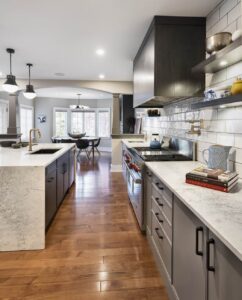
What type of kitchen countertop will work for you?
When it comes to choosing a kitchen countertop, it’s also important to factor in how important the look is to you and how you use your kitchen. Some questions to ask yourself:
- Are you going strictly for a look and feel you have your heart set on, regardless of any other factors?
- Are you looking for something that’s affordable, practical and easy to maintain?
- Do you do a lot of cooking and food prep or will your countertops see less use?
- What kind of long-term durability are you looking for? Do you want your counters to look the same 10 years from now, with no visible signs of aging, wear or patina?
- What level of maintenance are you willing to undertake?
- Do you want counters that are more environmentally friendly?
Keep in mind that no material is perfect. Although some come close in durability and low maintenance, don’t think they’re indestructible. Understanding that a little care and maintenance is required should help avoid disappointment down the road.
This article was originally posted July 2019.
